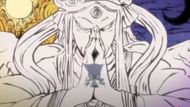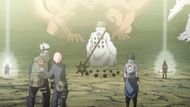Naruto's most arcane figure appears from the shadows of ancient yore. Hagoromo Ōtsutsuki, known as the Sage of Six Paths, laid the foundation of the shinobi world with decisions that echoed through the ages. His godlike powers and world-altering judgments position him as either humanity's greatest savior or its most perilous architect of misery.
Hagoromo is positioned on the side of good in Naruto, despite the fatal consequences his choices unleashed. His tireless commitment to peace, self-sacrifice for others, and genuine guilt for past errors reveal a character guided by kindness rather than malice. The catastrophe lies not in evil intent but in how good purposes can spawn generational conflict.
Hagoromo's tale in Naruto begins with tragedy and conflict. Born to Princess Kaguya, he saw firsthand the horror of the endless war that engulfed the ancient world. His mother's mutation into the monstrous Ten-Tails forced him and his brother Hamura into an unthinkable situation. They had to choose between family loyalty and protecting innocent lives.

The determination to fight against Kaguya justifies Hagoromo's moral compass. Despite treasuring his mother sincerely, he refused to accept her unjust rule and the agony it provoked. This choice set the foundation of his character as someone willing to make individual sacrifices for the greater good.
Once he defeated the Ten-Tails, Hagoromo dedicated himself to healing the world's suffering. He trekked across the land, sharing his knowledge of chakra via a philosophy called ninshū. This teaching highlighted connection, understanding, and peaceful coexistence rather than clash and supremacy.
The Sage's take on power allotment tells of his humane nature. Instead of hoarding his abilities, he voluntarily gave chakra to everyone he met. His goal was to build a world where people could understand each other's feelings and work together harmoniously. This gracious spirit collides with any notion of evil intent.
The Tragic Mistake of Favoritism in Naruto

Hagoromo’s biggest moral failing was how he handled the rivalry between his sons, Indra and Asura. His judgment to choose Asura as his successor, while well-intentioned, produced a split that would echo through eras in the Naruto universe. The favoritism he showed inadvertently sowed seeds of hostility and conflict that would be epitomized in coming incarnations.
Regardless, this mistake derived from a genuine faith in peaceful affiliation over individual power. Hagoromo came to believe that Asura’s teamwork and gift for uniting people represented the real way to achieve lasting peace. His error lay not in malicious intent but in failing to suitably address Indra's feelings and the possibility for good.
He plainly admits his mistakes as both a father and a leader. This modesty and readiness to learn from mistakes imply a fundamentally good character who genuinely cares about making amends.
When he finally faces Naruto and Sasuke, the reincarnations of his sons, Hagoromo makes a conscious decision to avoid reciting his past mistakes. He allocates his power equally between the young shinobi, offering that he understood from his experiences and grew as a person.

The transformation of ninshū into ninjutsu produced weapons of war rather than mechanisms of peace. The ongoing rivalry between the Senju and Uchiha clans can be traced back to his parenting decisions.
Yet these results arose despite his best intentions, not because of negative planning in the Naruto series. Hagoromo could not have envisioned how future generations would befoul his teachings or how his family dynamics would exploit history. Judging him by involuntary consequences rather than his actual motivations would be unfair.
The way he interacts with the tailed beasts reflects his kind and respectful character. Hagoromo gave each beast a name and treated them as individuals rather than mere pawns of power. The respect and tenderness they showed him in return speak volumes about his nature and the genuine care he showed.
As such, Hagoromo Ōtsutsuki evolves into a complex yet fundamentally good character in the Naruto series. His decision to assign the world's fate to Naruto and Sasuke depicts hope prevailing over despair. Rather than forsaking humanity due to past failures, he kept faith in the next generation's ability to succeed where he failed.
